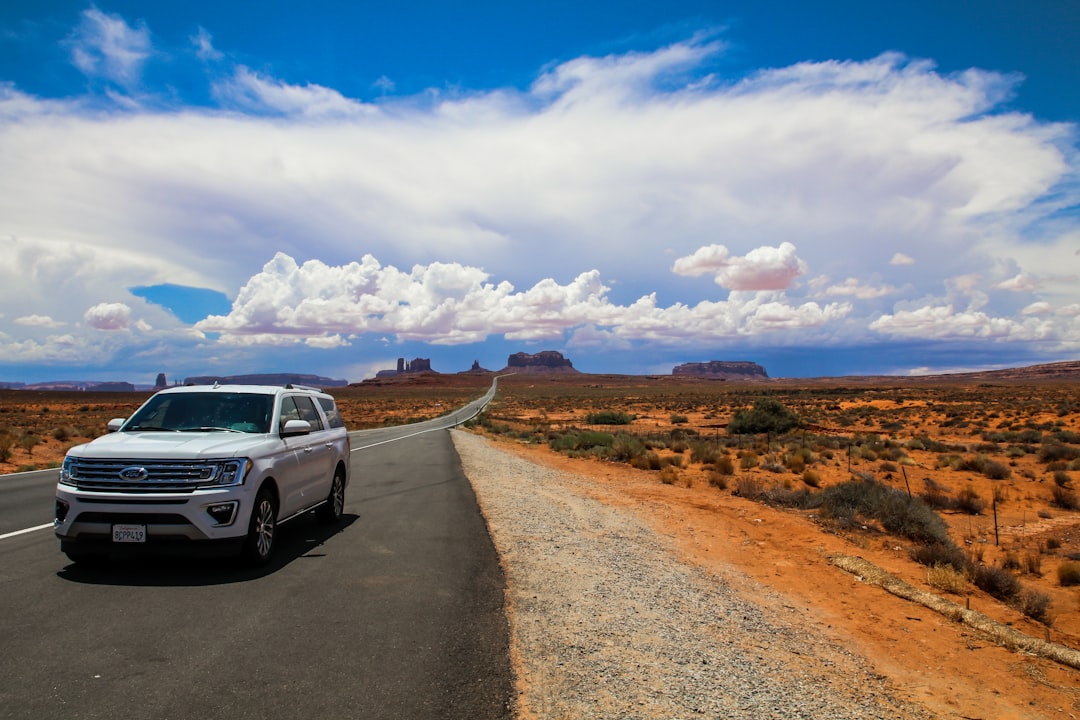Good Rental Cars for Road Trips: 10 Best Picks for 2025
Why Choosing the Right Rental Makes or Breaks Your Road Trip
Looking for good rental cars for road trips? Here’s a quick answer to get you started:
| Best Rental Cars for Road Trips | Best For | MPG | Notable Features |
|---|---|---|---|
| Honda Odyssey | Families | Up to 28 mpg highway | Seats 7, class-leading legroom |
| Chrysler Pacifica | Large groups | Up to 28 mpg highway | Stow ‘n Go seating, seats up to 8 |
| Toyota Camry/Honda Accord | Couples | 32-51 mpg | 15-17 cu ft trunk space |
| Midsize SUVs | Trip | 24-30 mpg | Extra cargo space, higher clearance |
| Compact cars | Solo travelers/Budget | 30-40+ mpg | Lowest rental & fuel costs |
Planning a road trip can be both exciting and overwhelming. Choosing good rental cars for road trips is crucial for comfort, reliability, and overall enjoyment of your journey. According to research, nearly 70% of Americans get stressed out by packing for travel, making adequate cargo space a key consideration when selecting your rental.
When deciding between using your own vehicle or renting, consider this eye-opening fact: A 2,000-mile trip costs approximately $1,070 in gasoline, maintenance, and wear and tear on your personal vehicle (based on the IRS rate of $0.53 per mile), while a 10-day rental averages around $350. That makes renting about half the cost when factoring in all expenses.
Most rental vehicles are only 1-2 years old, providing newer, more reliable options than many privately owned cars. This translates to peace of mind on long journeys, especially when traveling through unfamiliar territory or remote areas.
A good rule of thumb: If your trip exceeds 1,000 miles, renting often makes more financial sense than using your own car. The right rental doesn’t just save money—it can transform your entire road trip experience through better comfort, reliability, and features custom to your specific journey.

Rent vs. Drive Your Own: The Smart Road-Trip Decision
That moment before a road trip when you’re staring at your car in the driveway, wondering if it’s really up for the journey ahead… we’ve all been there. At Car News 4 You, we’ve done the math (so you don’t have to) on whether renting makes more sense than taking your own vehicle.
The Hidden Costs of Using Your Own Vehicle
Your personal car seems like the obvious choice at first glance. It’s familiar and convenient. But every mile you drive chips away at your car’s value through depreciation. Those maintenance intervals come up faster with each long trip. And that mysterious noise your car makes occasionally becomes a lot more concerning when you’re 300 miles from home.
The IRS hasn’t pulled that $0.53 per mile rate out of thin air. It represents the real cost of driving your own vehicle when you factor in everything. A 2,000-mile trip actually costs over $1,000 in real expenses—far beyond just filling up the tank a few times.
The Rental Advantage
Most rental fleets are filled with vehicles that are only 1-2 years old, giving you better reliability exactly when you need it most. If something does go wrong, it becomes the rental company’s problem, not yours. They’ll handle repairs or simply give you another vehicle.
“I always rent for long trips because my lease has a mileage cap,” a fellow road trip enthusiast told me recently. “The overage fees would cost far more than the rental.” For lease-holders, this point alone can make the decision crystal clear.
Many rental agreements include unlimited mileage, effectively eliminating the per-mile costs that add up with your personal vehicle. Plus, you can select exactly the right vehicle for your specific journey.
Border Crossing Considerations
Planning to cross state lines or international borders? Most rental agreements have no issues with interstate travel, but international crossings require a heads-up to the rental company and sometimes additional paperwork or insurance.
According to research on packing stress, a whopping 62% of Americans admit to overpacking for trips. Having a rental with ample cargo space can turn that stress into a distant memory.
For a deeper dive into planning the perfect getaway with a rental car, check out our comprehensive guide at How to Plan the Perfect Car Rental Vacation.
When you weigh all the factors—wear-and-tear, depreciation, maintenance risks, and the comfort of newer vehicles—choosing good rental cars for road trips often emerges as the smarter financial and practical decision for journeys over 1,000 miles.
Choosing the Perfect Fit: Size, Comfort & MPG
Finding that just-right rental car can make or break your road trip experience. Let’s explore how to match your trip with the ideal set of wheels.
Matching Vehicle Size to Your Group
When planning road trips, start with the headcount. Solo travelers can zip along efficiently in compact cars, enjoying the best fuel economy and lowest rates. Couples typically find midsize sedans hit the sweet spot between comfort and efficiency.
Families of 3-4 will appreciate the extra space of full-size sedans or small SUVs. For larger families or groups of 5+, minivans and large SUVs become your best friends.
Comfort needs escalate dramatically on long drives. That economy car that feels fine during your daily commute might feel cramped after eight hours of highway driving.
Cargo Volume Considerations
One road trip truth: we almost always bring more stuff than we think we will. Good rental cars for road trips provide adequate cargo space for real-world packing habits.
Compact cars typically offer 10-13 cubic feet—enough for about two medium suitcases. Midsize sedans bump that up to 15-17 cubic feet, handling 3-4 suitcases comfortably. Full-size sedans expand further to 16-20 cubic feet, while compact SUVs jump to 25-30 cubic feet, easily swallowing 5-6 suitcases.
The cargo champions are minivans, with 30-40 cubic feet behind the third row and a cavernous 80+ cubic feet with seats folded. The Chrysler Pacifica deserves special mention for its brilliant Stow ‘n Go system—seats disappear completely into the floor, creating massive cargo space without removing heavy seats.
Fuel Efficiency: Balancing Economy and Power
Your fuel budget can quickly balloon on long journeys. Compact cars lead the pack at 30-40+ mpg highway, with midsize sedans following at 28-35 mpg. Hybrid sedans are the efficiency champions, delivering 45-55+ mpg on highways.
SUVs and minivans trade some efficiency for space and capability. Compact SUVs typically return 25-32 mpg highway, minivans offer 24-28 mpg, and full-size SUVs bring up the rear at 20-26 mpg.
These differences add up quickly. On a 2,000-mile trip, upgrading from a 25 mpg vehicle to a 35 mpg option saves about 23 gallons of fuel—that’s $80-100 back in your pocket.
Special Considerations: AWD, EVs, and Off-Road Capability
Your planned route might require special vehicle features. Heading to snowy mountains or unpaved roads? All-wheel drive moves from luxury to necessity. Exploring rough terrain? Pay attention to ground clearance—those few extra inches can prevent a vacation-ruining undercarriage scrape.
Electric vehicles are increasingly available in rental fleets and offer a unique road trip experience. Just be sure to carefully map charging stations along your route. Hybrids offer a wonderful middle ground, maximizing range while minimizing stops.
If your trip plans include getting off the beaten path, check out our guide to the Best Compact SUV for Road Trips.
Good Rental Cars for Road Trips – Top Picks by Trip Type
Not all road trips are created equal, and neither are the vehicles best suited for them. After testing dozens of rentals, we’ve identified the perfect match for your specific journey type.
Best Family Haulers: Good Rental Cars for Road Trips with Kids
When traveling with children, space isn’t just nice—it’s essential for maintaining sanity. These good rental cars for road trips with kids deliver comfort for everyone involved:
The Honda Odyssey has become our go-to family recommendation with seating for 7 and genuinely usable third-row space. With up to 28 mpg highway, it balances efficiency with family-friendly features like multiple USB ports and available rear entertainment systems.
Perhaps even more impressive is the Chrysler Pacifica, which accommodates up to 8 passengers while offering the exclusive Stow ‘n Go seating system.
“The Pacifica’s Stow ‘n Go system is a revelation for road trips,” notes our automotive editor. “You can reconfigure the interior in seconds without removing heavy seats, making it perfect for families who need to adapt to changing cargo and passenger needs.”

Budget-Friendly Rides: Good Rental Cars for Road Trips on a Dime
Watching your wallet doesn’t mean suffering through an uncomfortable journey. These economical options deliver surprising comfort while keeping both rental and fuel costs low:
The Toyota Corolla might be the most underrated road trip companion, delivering up to 40 mpg highway while still offering standard Apple CarPlay/Android Auto connectivity and a trunk that swallows more luggage than you’d expect.
For something with a touch more refinement, the Nissan Sentra surprises with premium interior materials, exceptional noise isolation, and comfortable Zero Gravity seats. With 39 mpg highway and 14.3 cubic feet of trunk space, it’s practical too.
The Hyundai Elantra deserves special mention for road-trippers seeking maximum efficiency without sacrificing comfort. The hybrid version achieves up to 43 mpg highway, while available ventilated front seats keep you cool during summer journeys.
For couples seeking the perfect balance of space and efficiency, full-size sedans like the Toyota Camry and Honda Accord deliver near-luxury comfort with impressive efficiency. Their hybrid versions achieve between 32-51 mpg while providing 15-17 cubic feet of trunk space.
Trip-Ready Options
When your journey takes you beyond the pavement, your vehicle choice becomes even more critical. The Jeep Wrangler remains the ultimate off-road rental with its iconic styling, removable top, and genuine four-wheel-drive capability.
For a more practical blend of on-road comfort and off-road capability, the Subaru Outback hits the sweet spot with standard all-wheel drive, an impressive 8.7 inches of ground clearance, and up to 33 mpg highway.
Solo travelers often find compact SUVs like the Honda CR-V or Toyota RAV4 offer the perfect blend of efficiency, cargo space, and comfort for extended journeys.
For more specialized recommendations, check out our guides to the Best Trip Vehicles 2024 and Best Compact Car for Road Trips.
Budget & Protection: Costs, Insurance & Savvy Savings
Understanding the financial side of car rentals can save you hundreds while ensuring you’re properly covered for whatever the open road throws your way.
Smart Pricing Strategies
The difference between a good deal and an expensive rental often comes down to timing and location. Weekly rates are almost always your friend—I’ve frequently seen 7-day rentals priced the same as 5-day rentals, essentially giving you two free days on the road.
Airport convenience comes at a premium, with locations typically charging 10-25% more than their off-airport counterparts. If your journey begins and ends in the same city, consider this insider tip: “Take a quick rideshare to an off-airport location,” suggests our travel expert. “You’ll dodge those hefty airport concession fees and often find better vehicle selection too.”
Timing matters tremendously. Prices tend to drop about two weeks before pickup dates as companies look to fill their lots. And remember that each step up in vehicle size typically adds $5-15 daily to your bill.
Discount Opportunities
Your existing memberships and affiliations might be your ticket to significant savings. AAA, AARP, and Costco memberships often open up special rental rates that aren’t advertised publicly. Even many credit card loyalty programs offer rental discounts.
Extended rentals of a week or longer typically trigger automatic discounts, and prepaying your reservation can knock 5-15% off the total price. Don’t forget to check if your employer has negotiated corporate rates.
Insurance Considerations
Rental counter insurance conversations can be intimidating, but understanding your options beforehand puts you in control:
“I always recommend verifying your personal auto insurance coverage before declining the rental company’s options,” advises our insurance specialist. “Many policies have surprising exclusions for certain vehicle types or uses.”
Many credit cards offer collision damage waiver (CDW) coverage when you use them to pay for your rental—a fact that can save you $15-30 daily. Your personal auto insurance may extend to rental cars, but call your agent to confirm specifics before your trip.
While rental company protection options provide peace of mind, third-party insurance policies from companies like Allianz or Insure My Rental Car often offer better value.
Fuel Plans and Refueling Strategy
That prepaid fuel option the rental agent is pushing? It rarely makes financial sense unless you’re planning to return the car running on fumes. Instead, follow this simple strategy:
- Decline the prepaid fuel option
- Fill up before returning the vehicle (within 10 miles of the return location)
- Use apps like GasBuddy or check gas price tracking to find the best fuel prices
- Keep your final fill-up receipt as proof of refueling
For budget-conscious travelers wondering if smaller vehicles can handle a long journey, check out our practical analysis: Are Compact Rental Cars Good for Road Trips?.
Road-Trip Essentials: Features, Add-Ons & Packing Hacks
The right features and smart packing can make the difference between a stressful journey and the road trip of your dreams. After helping thousands of travelers hit the open road, I’ve learned what truly matters when setting up your rental for success.
Must-Have Vehicle Features
When selecting your rental car, certain features aren’t just nice-to-have – they’re game-changers for long drives. Adaptive cruise control reduces driver fatigue dramatically on long interstate stretches. Apple CarPlay and Android Auto seamlessly integrate your phone’s navigation and entertainment. And those multiple USB ports throughout the cabin are relationship-savers when everyone’s devices need charging.
Don’t underestimate the importance of an adjustable driver’s seat with proper lumbar support. What feels comfortable during a quick test drive can become torture after several hours.
Valuable Rental Add-Ons
Rental companies love offering add-ons, but which ones actually deserve your money? The unlimited mileage option is non-negotiable for serious road trips. Adding additional drivers is worth every penny for journeys over 4-5 hours. Being able to swap drivers keeps everyone fresh and makes the trip more enjoyable.
If you’re flying to your road trip starting point, child safety seats from the rental company often make more financial sense than checking your own. And while your phone can handle navigation duties in most places, a dedicated GPS navigation system can be a lifesaver in areas with spotty cell coverage.

Packing Strategies for Maximum Space
Did you know that 62% of Americans admit to overpacking for trips? I’ve seen countless travelers struggle with tetris-like trunk arrangements that could have been avoided with smarter choices.
Soft-sided luggage is a road-tripper’s secret weapon. Unlike rigid suitcases, these bags can conform to odd-shaped spaces in your trunk or backseat. Packing cubes take this efficiency to the next level, compressing clothes while keeping everything organized.
Don’t ignore those footwell spaces – they’re perfect for day bags or snack coolers. Door pockets should hold frequently accessed items like water bottles and hand sanitizer.
Road Trip Essentials to Pack
Beyond clothing and toiletries, successful road trips require specialized gear. A good cooler saves money and time by keeping drinks and snacks fresh between stops. Trash bags preserve your sanity by containing inevitable food wrappers until you reach a proper disposal site.
Paper towels and wet wipes earn their weight in gold after the first spilled drink or sticky fingers situation. A compact first aid kit handles minor emergencies without derailing your schedule.
For summer trips, a foldable sunshade keeps your parked car from becoming an oven. And reusable water bottles for everyone not only reduce plastic waste but save you from paying premium prices at convenience stores.
Refueling Strategy
A thoughtful approach to keeping your tank filled prevents stress and wasted time. My golden rule: never let the tank drop below quarter-full in unfamiliar territory. Use apps like GasBuddy to find the best fuel prices along your route.
Fill up before entering remote areas or during evening stops to avoid morning delays. And always keep receipts as proof of refueling – this small habit can prevent disputes when returning your rental.
For those trying EV rentals, research charging stations along your route using PlugShare or ChargePoint, and build charging stops into your itinerary.
Frequently Asked Questions about Rental-Car Road Trips
Is it cheaper to rent or use my own car for a 1,000-mile journey?
The 1,000-mile mark is often the tipping point where renting becomes the smarter financial choice. When you crunch the numbers using the IRS standard mileage rate of $0.53 per mile, driving your own vehicle costs about $530 in total expenses for that distance. That figure accounts for everything – fuel, maintenance, and the hidden cost of depreciation.
Meanwhile, a typical 5-7 day rental will set you back around $250-400, potentially saving you a nice chunk of change. This math becomes even more favorable on longer journeys or if you own a gas-guzzler or luxury vehicle with steeper depreciation costs.
“I used to automatically take my SUV on road trips until I did the math,” shares one of our readers. “Now I rent a fuel-efficient sedan for long trips and save my vehicle for daily commuting.”
Your car’s age matters too. If you’re driving a newer vehicle under warranty, using it for shorter trips might make sense. But that older car with 100,000+ miles? Leaving it in the garage during your cross-country trip could save you from a breakdown in unfamiliar territory.
Can I cross state or country borders in a rental car?
Crossing state lines within the US is generally no problem – most rental agreements allow this without restrictions. However, international travel requires some homework:
For Canada trips, most major rental companies are accommodating, but you’ll need to:
- Tell the rental company beforehand about your plans
- Verify whether you need additional insurance coverage
- Check if roadside assistance works across the border
- Bring proper documentation (passport and rental agreement)
Mexico trips come with more complications:
- Many rental companies flat-out prohibit taking their vehicles into Mexico
- Those allowing it typically require special (and often pricey) insurance
- Mexican car insurance isn’t optional – it’s legally required
- Some companies only allow travel in certain border regions
The golden rule: always review your rental agreement thoroughly and discuss your travel plans with the company upfront.
What insurance do I really need for a long road trip?
Collision Damage Waiver (CDW) covers damage to your rental vehicle. Before automatically adding this at the counter, check if your credit card already provides this coverage – many premium cards do. Your personal auto insurance might also extend to rentals.
Liability Insurance protects you if you damage other vehicles or property. Your personal auto policy typically extends this coverage to rentals, but if you carry minimal liability limits at home, consider supplemental coverage for your trip.
Personal Effects Coverage sounds useful but is often unnecessary. Your homeowners or renters insurance usually covers your belongings even when they’re in a rental car.
Roadside Assistance can be a lifesaver if you get a flat tire or lock your keys in the car. If you have AAA or similar coverage, it often works with rental vehicles too.

Conclusion
Picking good rental cars for road trips isn’t just about getting from point A to B—it’s about creating memories along the way. Whether you’re piling the kids into a spacious Honda Odyssey, cruising efficiently in a Toyota Camry with your partner, or tackling off-road trips in a capable SUV, your vehicle choice sets the tone for your entire journey.
When you crunch the numbers, the financial case for renting on trips over 1,000 miles becomes crystal clear. That IRS mileage rate of $0.53 per mile reflects the real costs of depreciation, maintenance, and wear-and-tear that many travelers overlook. By choosing a rental, you’re shifting those long-term costs and risks to the rental company while enjoying a newer, more reliable vehicle specifically suited to your trip.
At Car News 4 You, we’ve seen how the right vehicle transforms an ordinary road trip into something extraordinary. There’s something liberating about hitting the highway in a vehicle that perfectly matches your needs—spacious enough for comfort, efficient enough for fewer fuel stops, and reliable enough to banish those nagging “what if it breaks down?” worries.
Remember these road-trip wisdom nuggets as you plan your next trip:
Match your rental to both your passenger count and your luggage reality. That extra space for comfort makes all the difference after several hours on the road. Consider fuel efficiency seriously—those savings add up mile after mile. Aim to book about two weeks before your trip for that sweet spot in pricing. Always verify your insurance coverage before you’re standing tired at the rental counter. And perhaps most importantly, accept unlimited mileage options for the freedom to follow those tempting “scenic route” signs without watching the odometer.
For deeper insights into selecting your perfect road trip companion, our detailed guide awaits: More info about the ultimate road-trip vehicles.

The open road is calling—and with the right rental choice, you’ll enjoy every mile of the journey just as much as the destination itself. Safe travels!








